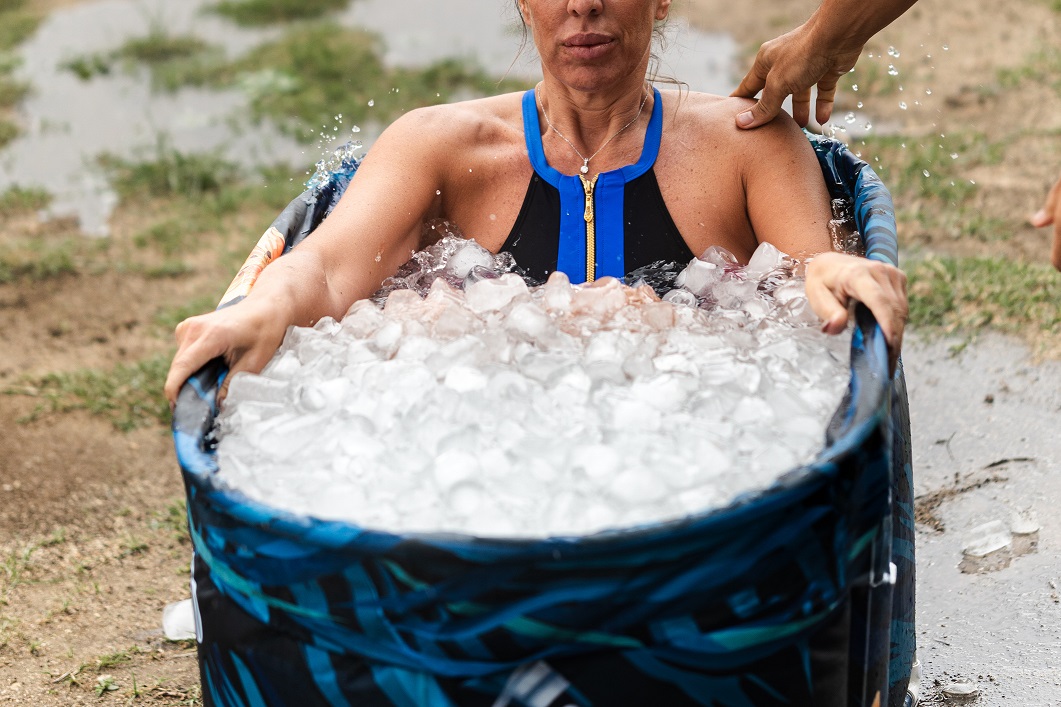Despite its temperature, cold-water immersion is one of the hottest fitness trends. Also known as a cold-water plunge, this concept became popular over a decade ago when used as awareness for fundraising campaigns (most notably the Ice Bucket Challenge for Amyotrophic Lateral Sclerosis, or ALS, and the Polar Plunge for Special Olympics).
Now it’s being touted as a way to reduce inflammation and soreness after exercising. From Amazon to Aldi, people can purchase their own ice bath to use at home.
What is a cold plunge?
A cold plunge is immersing oneself in a very cold bath. Cleveland Clinic says to use water between 50 and 59 degrees Fahrenheit for beginners, while more experienced individuals can go as low as 39 to 50 degrees. The clinic advises starting with three minutes of immersion and doing no more than five. For beginners, shorter durations are encouraged.
As with anything else, listen to your body. Exit the water if you’re feeling discomfort.
What are the benefits?
Both the Cleveland Clinic and the Mayo Clinic report that immersing in cold water after a workout can help ease sore muscles. The cold water constricts your blood vessels, which slows blood flow and relieves some of that swelling and soreness you feel in your muscles after a long run or a hard-fought game. This also helps to decrease inflammation.
Keep in mind that if you’re using this to help alleviate pain felt during a working, you should talk to your doctor as there may be an underlying issue.
Another plus is that it helps even out your body temperature. Working out can cause the body to heat up and sweat, so a quick cool down can bring you back to normal. But remember not to exceed that five-minute limit.
Much like a hot coffee provides a caffeine kick that helps some focus, a cold-water plunge can help give a jolt of focus to your brain.
What are the risks?
Research shows that cold-water plunges or ice baths can be dangerous for people with medical conditions including but not limited to: heart disease, high blood pressure, diabetes, peripheral neuropathy, poor circulation, venous stasis, cold agglutinin disease.
Other risks include the potential for hypothermia, which is when prolonged exposure to cold water can lower your core body temperature. The result is shivering, confusion and, in extreme cases, unconsciousness.
The Cleveland Clinic states that repeated or overly long cold plunges may cause frostbite or skin damage in extreme cases, especially if you’re exposed to near-freezing water temperatures. Dr. Firas Sibai
Like introducing anything new to your physical routine, it’s always best to first speak with a healthcare provider to be sure there are no underlying issues.
"It's unclear if the benefits associated with cold-water plunging outweigh the risks," said Dr. Firas Sibai, Riverside Rheumatology Specialist. "If curious about trying this form of water immersion, it's best to speak to your doctor beforehand."
For more information on Riverside Rheumatology Specialists, visit www.riversidehealthcare.org/services/rheumatology.
Sources: Mayo Clinic (January 2024); Cleveland Clinic (December 2024).


